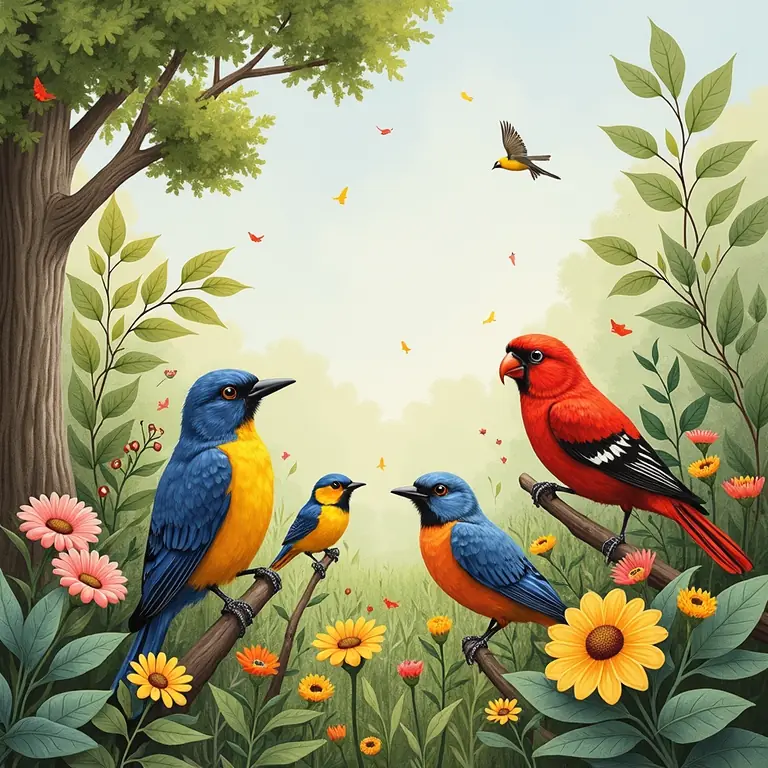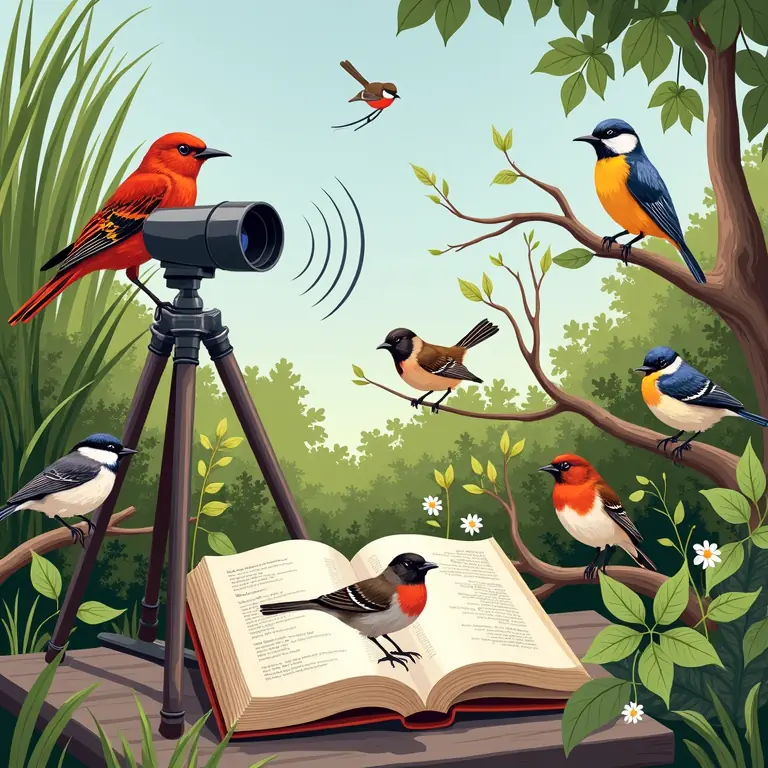Build a Better Bird Song ID: A Friendly Guide to Backyard Ornithology
Welcome to the wonderful world of bird song identification! It’s a hobby that connects you with nature, sharpens your listening skills, and adds a delightful soundtrack to your life. Perhaps you’ve heard a beautiful melody in your garden and wondered, “What bird is that?” Or maybe you’re simply curious about the creatures sharing your backyard. This guide will walk you through the basics, from understanding bird song terminology to utilizing helpful resources, and ultimately, becoming a more confident bird song identifier. Don’t worry if you’re a complete beginner – we’ll start with the very foundations.
Why Bird Song ID? More Than Just a Pretty Tune
Identifying birds by their songs (and calls – we’ll get to the difference shortly) isn’t just a fun pastime; it offers a deeper understanding of the ecosystem around you. Birds are excellent indicators of environmental health. Their presence, absence, and breeding success can tell us a lot about the quality of our local habitats. By learning to identify them, you’re contributing to citizen science, helping researchers monitor bird populations and track changes over time. Plus, it’s incredibly rewarding to recognize a bird solely by its voice – a skill that feels almost magical!
Bird Song vs. Bird Calls: What’s the Difference?
Before diving into identification, let’s clarify the terminology. Bird songs are generally longer, more complex vocalizations used primarily by males to attract mates and defend territory. Think of them as the bird’s way of saying, “Hey, look at me! I’m a healthy, desirable partner!” They often have varied phrasing and are more musical.
Bird calls, on the other hand, are typically shorter and simpler. They serve a variety of functions, such as alerting others to danger (alarm calls), coordinating flock movements (flight calls), or maintaining contact between family members (contact calls). A sharp “chip” or a scolding “chack” are examples of calls. While songs are often associated with breeding season, calls are used year-round.
The Four Basic Elements of Bird Song
To effectively describe and remember bird songs, it’s helpful to break them down into four key elements:
- Pitch: Is the song high, low, or does it vary? Think of it like notes on a musical scale.
- Tempo: How fast or slow is the song? Is it a rapid trill or a drawn-out whistle?
- Quality: What is the overall tone of the song? Is it clear, buzzy, raspy, or musical?
- Pattern: What is the structure of the song? Are there repeating phrases? Does it rise and fall in pitch?
Learning to identify these elements takes practice. Start by focusing on one element at a time. For example, try to simply determine whether a song is high-pitched or low-pitched. Then, gradually add more elements to your analysis.

Mnemonic Devices: Turning Songs into Stories
One of the most effective ways to learn bird songs is to use mnemonic devices – memorable phrases or descriptions that capture the essence of a song. For example, the White-throated Sparrow’s song is often described as “Oh, sweet Canada, Canada, Canada.” The Eastern Towhee’s song is famously remembered as “Drink your teeee!” These mnemonics aren’t perfect representations of the song, but they provide a helpful anchor for your memory.
Don’t be afraid to create your own mnemonics! What does the song *remind* you of? Be creative and have fun with it. The more personal and memorable the mnemonic, the more likely you are to recall the song later.
Top Tools and Resources for Bird Song ID
Fortunately, you don’t have to rely solely on your ears and memory. Numerous resources are available to help you learn and improve your bird song identification skills:
- Merlin Bird ID App (Cornell Lab of Ornithology): This free app is a game-changer for beginners. It uses sound recognition technology to identify birds based on their songs. You can record a song, and Merlin will provide a list of likely matches, along with audio examples and distribution maps. Learn more about Merlin here.
- eBird (Cornell Lab of Ornithology): eBird is a citizen science project that allows you to record your bird sightings (and songs!) and contribute to a global database. It also provides access to vast amounts of information about bird distribution, abundance, and behavior.
- Xeno-canto: This website is a collaborative database of bird recordings from around the world. It’s a fantastic resource for hearing variations in songs from different regions and individuals. Explore Xeno-canto’s collection.
- All About Birds (Cornell Lab of Ornithology): This website provides comprehensive information about North American birds, including detailed descriptions of their songs and calls, along with audio examples and photos.
- Sibley Guides: The Sibley Guides (both print and digital) are renowned for their detailed illustrations and comprehensive coverage of North American birds. They also include information about bird songs and calls.
Putting it into Practice: A Step-by-Step Approach
Okay, you’ve got the basics and some tools. Now, let’s put it into practice:
- Find a Quiet Spot: Minimize background noise as much as possible. Early morning is often the best time to listen, as bird activity is typically highest.
- Focus Your Attention: Close your eyes and really *listen*. Try to isolate individual songs from the surrounding sounds.
- Describe the Song: Use the four basic elements (pitch, tempo, quality, pattern) to describe the song to yourself.
- Use Your Resources: If you’re unsure, use the Merlin app or another resource to help you identify the bird.
- Confirm Your Identification: Once you have a potential match, listen to audio examples from multiple sources to confirm your identification.
- Observe the Bird (If Possible): If you can see the bird, observe its appearance and behavior. This can help you confirm your identification.
- Keep a Bird Song Journal: Record your observations in a journal. Note the date, time, location, and a description of the song. This will help you track your progress and remember what you’ve learned.
Focus on Common Birds First
Don’t try to learn every bird song at once! Start with the common birds in your area. These will be the ones you hear most frequently, and mastering their songs will build your confidence. Here’s a short list to get you started:

- American Robin
- Northern Cardinal
- House Finch
- Song Sparrow
- Chickadee (Black-capped or Carolina)
- Blue Jay
Once you’ve mastered the songs of these common birds, you can gradually expand your repertoire.
Beyond Identification: Understanding Bird Behavior
As you become more proficient at bird song identification, you’ll start to notice patterns and nuances in bird behavior. For example, you might learn that a particular song is associated with courtship displays, territorial defense, or alarm calls. This deeper understanding will enhance your appreciation of the natural world.
The Joy of Discovery
Bird song identification is a lifelong learning journey. There will be times when you’re stumped, but don’t get discouraged! The joy of discovery is what makes this hobby so rewarding. Every new song you identify is a victory, and every bird you recognize by its voice is a testament to your growing knowledge and connection with nature.
Resources to Further Your Financial Wellness
While enjoying the serenity of birdwatching, it’s also important to maintain a healthy financial life. Here are a few resources to help you with that:
- Build a Better Budget Binder: A Friendly Guide to Cash Envelope Systems – Take control of your finances with a practical budgeting method.
- Decode Your Donations: A Friendly Guide to Effective Charitable Giving – Make informed decisions about your charitable contributions.
- Decode Your Declutter: A Friendly Guide to the Konmari Method for Digital Files – Organize your digital life and reduce stress.
Birding 101: A Visual Introduction
Want a visual introduction to the world of birding? Check out this helpful video:
This video provides a great overview of birding basics, including equipment, techniques, and ethical considerations.
Final Thoughts
So, go forth and listen! Open your ears, embrace the challenge, and enjoy the beautiful world of bird song. With practice and patience, you’ll be amazed at how much you can learn. Happy birding!


Discussion about this post